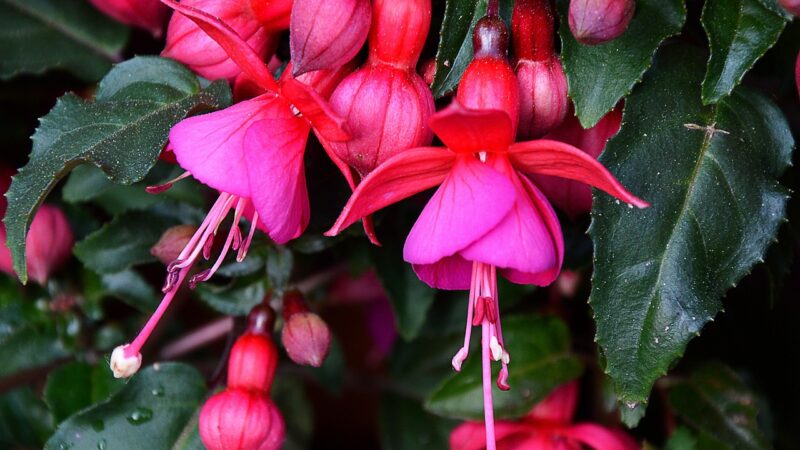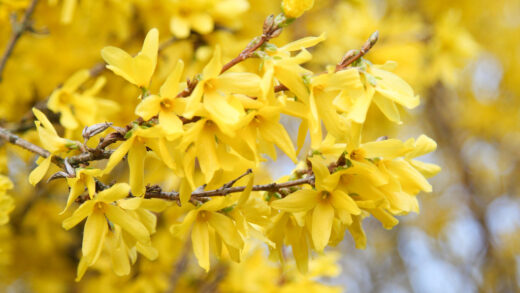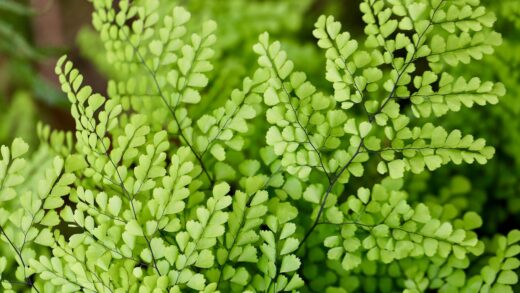Watering and fertilizing of fuchsia

Providing the correct balance of water and nutrients is absolutely central to the successful cultivation of vibrant, healthy fuchsias. These plants have a significant demand for both, especially during their active growing and flowering season, and any imbalance can quickly lead to a decline in plant health. Mastering the art of watering involves understanding that it is not about a rigid schedule, but rather about responding to the plant’s specific needs, which are influenced by a multitude of factors such as pot size, temperature, and light exposure. Similarly, a well-structured fertilization program is essential to fuel the prolific blooming that makes fuchsias so beloved by gardeners.
The fundamental principle of watering fuchsias is to maintain consistent moisture in the soil without allowing it to become waterlogged. The ideal time to water is when the top inch or two of the compost feels dry to the touch. This simple test is far more reliable than adhering to a fixed timetable, as the plant’s water usage will fluctuate daily. When watering, it is crucial to do so thoroughly, allowing water to penetrate the entire root ball and run out of the drainage holes at the bottom of the pot. This practice ensures that all roots have access to moisture and also helps to flush out any build-up of mineral salts from fertilizers.
Overwatering is one of the most common mistakes in fuchsia care and can have fatal consequences. When the soil is perpetually saturated, the air pockets become filled with water, depriving the roots of the oxygen they need to function and respire. This anaerobic condition leads to root rot, a fungal disease that causes the roots to turn brown and mushy, ultimately killing the plant. The initial symptoms of overwatering, such as wilting and yellowing leaves, can often be mistaken for underwatering, leading to a vicious cycle if the true cause is not identified.
Conversely, allowing the plant to dry out completely can also cause significant stress. When the soil becomes too dry, the plant will wilt as it is unable to draw up enough water to maintain turgor pressure in its cells. While a fuchsia may recover from occasional wilting, repeated instances of severe drying out can lead to leaf drop, bud blast, and a general loss of vigor. Therefore, the goal is to find the consistent middle ground, providing a reliable source of moisture that keeps the plant hydrated and thriving without suffocating its roots.
The fundamentals of fertilization
Fuchsias are known as heavy feeders, meaning they require a substantial and regular supply of nutrients to support their vigorous growth and prolific flowering. During the main growing season, which typically runs from spring through to late summer, a consistent fertilization regime is essential. Without adequate nutrition, plants will appear stunted, with pale or yellowing leaves, and will produce significantly fewer, smaller flowers. Providing the right nutrients at the right time is the key to unlocking the full spectacular potential of these plants.
More articles on this topic
The choice of fertilizer is an important consideration. A balanced, water-soluble fertilizer is generally the best option for fuchsias grown in containers, as it provides nutrients in a readily available form that the plant can absorb quickly. Look for a fertilizer where the N-P-K (Nitrogen-Phosphorus-Potassium) numbers are relatively equal, such as a 20-20-20 formula. During the peak blooming period, some growers switch to a ‘bloom booster’ formula, which has a higher phosphorus content (the middle number) to specifically encourage flower production.
The frequency of application is just as important as the type of fertilizer used. A common recommendation is to feed fuchsias with a diluted liquid fertilizer once a week or once every two weeks. It is crucial to follow the dilution instructions on the product label carefully, as applying a fertilizer that is too concentrated can scorch the roots and damage the plant. It is also important to only fertilize a plant when the soil is already moist; applying fertilizer to dry soil can also cause root burn.
As the season progresses into autumn, the plant’s nutritional needs change. With cooling temperatures and shorter days, the fuchsia’s growth rate slows down as it prepares for winter dormancy. At this time, fertilization should be gradually tapered off and then stopped completely, usually by early to mid-autumn. Continuing to feed the plant late into the season would encourage soft, new growth that is highly susceptible to frost and would not have time to harden off before winter.
Adjusting for environmental factors
The specific watering and fertilizing needs of a fuchsia are not static; they are dynamically influenced by the plant’s immediate environment. Temperature and light are two of the most significant factors. On hot, sunny, and windy days, the rate of transpiration – the process of water movement through a plant and its evaporation from leaves – increases dramatically. Consequently, a fuchsia will require significantly more water on such days compared to a cool, overcast, and still day.
More articles on this topic
The type and size of the container also play a crucial role. Fuchsias grown in smaller pots will dry out much more quickly than those in larger containers, simply because there is a smaller volume of soil to hold moisture. Similarly, plants in porous terracotta pots will need more frequent watering than those in non-porous plastic or glazed ceramic containers, as water evaporates through the walls of the clay. Hanging baskets are particularly prone to drying out quickly due to the increased air circulation around the pot.
The stage of the plant’s growth cycle is another key variable. A young, newly potted cutting will have very different requirements from a large, mature plant that is in the midst of its peak flowering period. A mature plant with a large mass of foliage and flowers will be transpiring and using nutrients at a much higher rate. Therefore, both watering and fertilization must be scaled up as the plant grows and develops throughout the season.
Ultimately, the most effective approach is one of careful and regular observation. Rather than relying on a rigid schedule, take the time to check the plants daily. Feel the weight of the pot – a well-watered pot will feel significantly heavier than a dry one. Look at the plant itself for any early signs of wilting or discoloration. By becoming attuned to these subtle cues, a gardener can develop an intuitive understanding of their plant’s needs and provide water and nutrients precisely when they are required, ensuring optimal health and performance.
The role of micronutrients
While the primary macronutrients – Nitrogen (N), Phosphorus (P), and Potassium (K) – are required in the largest quantities, a range of micronutrients are also absolutely essential for the healthy growth and development of fuchsias. These trace elements, including iron, magnesium, manganese, and boron, play vital roles in various physiological processes, from chlorophyll production and photosynthesis to enzyme activation. A deficiency in any one of these micronutrients can lead to specific symptoms and a general decline in plant vigor, even if the primary nutrients are plentiful.
Magnesium deficiency, for example, often manifests as yellowing between the veins of the older, lower leaves, a condition known as interveinal chlorosis. This is because magnesium is a central component of the chlorophyll molecule, and when it is in short supply, the plant will move it from older tissues to support new growth. Iron deficiency presents with similar symptoms, but it typically appears first on the new, younger leaves at the top of the plant, as iron is less mobile within the plant’s tissues.
Most high-quality, balanced, water-soluble fertilizers will contain a comprehensive range of these essential micronutrients. Using such a complete fertilizer as part of a regular feeding program is usually sufficient to prevent any deficiencies from occurring in container-grown fuchsias. However, issues can sometimes arise if the pH of the potting medium is too high (alkaline), as this can ‘lock up’ certain micronutrients, particularly iron, making them unavailable for the plant to absorb even if they are present in the soil.
In cases where a specific micronutrient deficiency is suspected, it can often be corrected with a targeted foliar spray. This involves dissolving a product containing the deficient nutrient, such as Epsom salts for magnesium or chelated iron for iron, in water and spraying it directly onto the plant’s leaves. The foliage can absorb the nutrients directly, providing a much faster response than a soil application. However, this should be seen as a corrective measure, and the long-term solution lies in maintaining a healthy soil environment with a proper pH and a consistent, balanced fertilization regime.
Water quality considerations
The quality of the water used for irrigating fuchsias can have a significant impact on their long-term health, an aspect that is often overlooked by gardeners. Tap water in many areas is treated with chlorine or chloramine, and can also be ‘hard’, meaning it has a high concentration of dissolved minerals, particularly calcium and magnesium carbonates. While these minerals are not necessarily harmful in small amounts, their accumulation in the potting soil over time can have adverse effects.
One of the main issues with hard water is its tendency to raise the pH of the potting medium, making it more alkaline. Fuchsias prefer a slightly acidic soil environment, typically with a pH between 6.0 and 7.0. As the pH rises above this optimal range, the availability of certain key nutrients, most notably iron and manganese, is significantly reduced. This can lead to deficiency symptoms, such as interveinal chlorosis on new leaves, even when a complete fertilizer is being used regularly.
The accumulation of mineral salts from both hard water and fertilizers can also become problematic. Over time, these salts can build up in the soil to levels that can damage the plant’s delicate root system, a condition often referred to as fertilizer salt burn. A visible sign of this build-up is a white, crusty deposit on the surface of the soil or around the drainage holes of the pot. To mitigate this, it is good practice to occasionally flush the pot thoroughly with a large volume of water, allowing it to drain freely, which helps to leach out the excess salts.
For growers with particularly hard water, or for those cultivating prized specimens, using an alternative water source can be beneficial. Rainwater is an excellent choice as it is naturally soft and slightly acidic, making it ideal for fuchsias. Collecting rainwater in a water butt is a simple and sustainable solution. Alternatively, allowing tap water to sit in an open container for 24 hours can help some of the chlorine to dissipate, although this will not reduce its hardness. Using filtered or distilled water is another option, though it may not be practical for a large collection of plants.

















